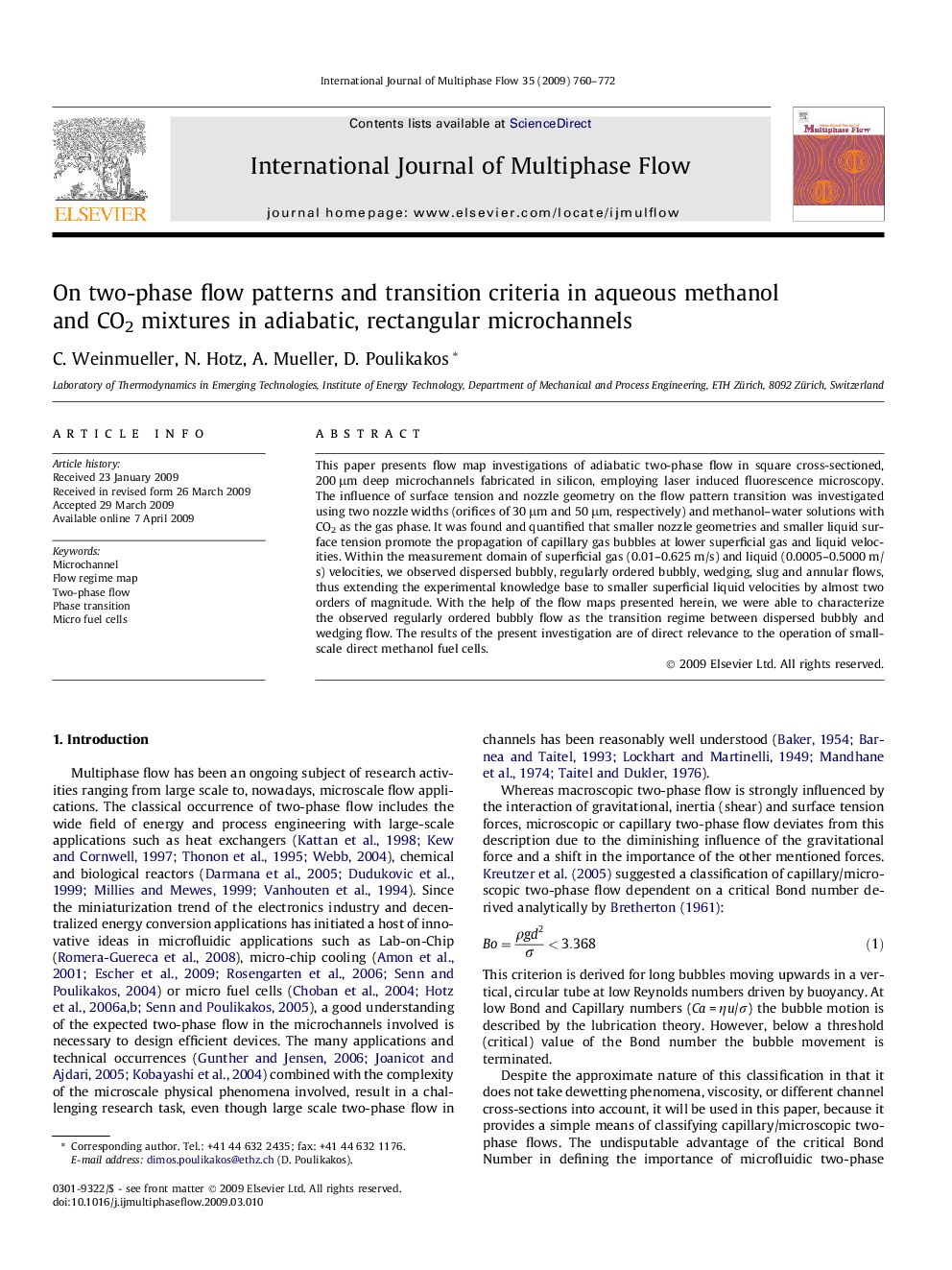| Article ID | Journal | Published Year | Pages | File Type |
|---|---|---|---|---|
| 667479 | International Journal of Multiphase Flow | 2009 | 13 Pages |
This paper presents flow map investigations of adiabatic two-phase flow in square cross-sectioned, 200 μm deep microchannels fabricated in silicon, employing laser induced fluorescence microscopy. The influence of surface tension and nozzle geometry on the flow pattern transition was investigated using two nozzle widths (orifices of 30 μm and 50 μm, respectively) and methanol–water solutions with CO2 as the gas phase. It was found and quantified that smaller nozzle geometries and smaller liquid surface tension promote the propagation of capillary gas bubbles at lower superficial gas and liquid velocities. Within the measurement domain of superficial gas (0.01–0.625 m/s) and liquid (0.0005–0.5000 m/s) velocities, we observed dispersed bubbly, regularly ordered bubbly, wedging, slug and annular flows, thus extending the experimental knowledge base to smaller superficial liquid velocities by almost two orders of magnitude. With the help of the flow maps presented herein, we were able to characterize the observed regularly ordered bubbly flow as the transition regime between dispersed bubbly and wedging flow. The results of the present investigation are of direct relevance to the operation of small-scale direct methanol fuel cells.
